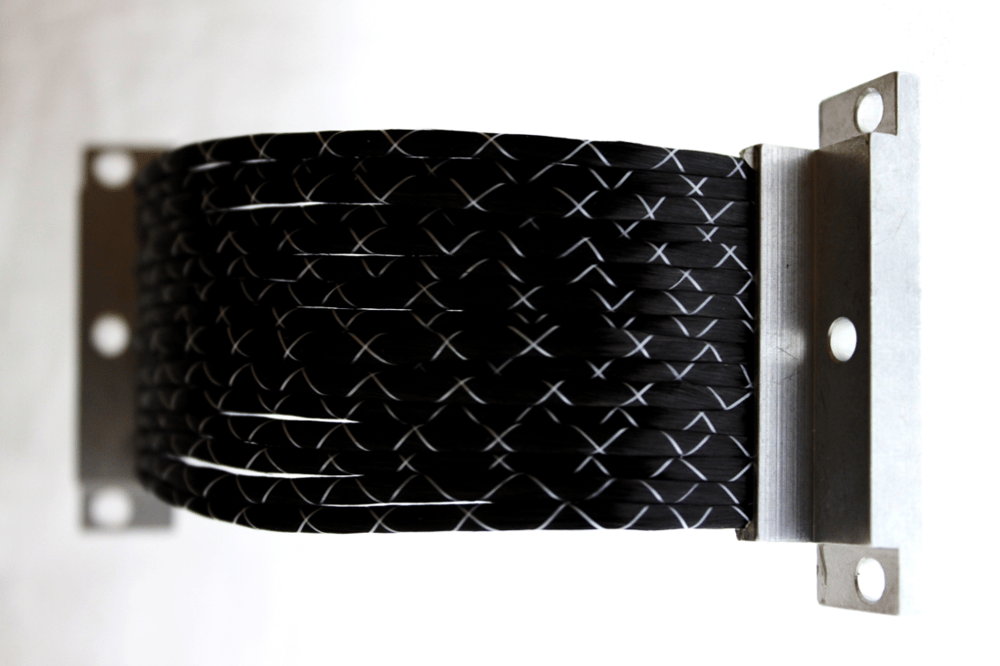
GPS III Launches with TAI's Graphite Fiber Thermal Straps (GFTS) on Board
In a string of launches, milestones and records in our spaceflight history, TAI is proud to announce that the first of the GPS III Satellites launched on December 23rd, 2018, with our Graphite Fiber Thermal Straps (GFTS®) on board! The spacecraft, dubbed "Vespucci," was deployed into medium Earth orbit about 2 hours after liftoff.
TAI provided over 100 GFTS® assemblies to Honeywell Aerospace for instruments on GPS III, between 2013 and 2017. Our GFTS® products were an ideal solution for the required dual-armed strap configuration, as the application required an extremely low mass (but high conductance) strap, as well as flexibility on all 3 axes (which ruled out metallic and graphite-based sheet/foil straps, given the installation configuration).
The GPS III Mission
The GPS constellation provides precise positioning, navigation and timing (PNT) information to a variety of users, from soldiers in the field to drivers trying to find the best route through rush-hour traffic.
The network currently features 31 operational satellites, which orbit about 12,550 miles (20,200 kilometers) above Earth. The SUV-size Vespucci, which weighed 9,700 lbs. (4,400 kilograms) at launch, won't push that number up; it will replace a GPS craft known as SVN-43, which launched in July 1997.
The solar-powered Vespucci will provide a number of advantages over the old-guard satellites, Air Force officials said. For example, the new satellite will deliver PNT information three times more accurate than that of currently operational GPS craft. (The constellation now allows users to locate objects on the ground with an average accuracy of about 20 inches, or 50 centimeters.)
In addition, "we're going to see an increase in power," Col. Steve Whitney, director of the SMC Global Positioning Systems Directorate, said in the Dec. 14 telecon. "We put a requirement on there to produce stronger signals, to try and fight through some of that jamming that we see, particularly on our military signals."
GPS III signals will also be compatible with other satellite-navigation systems, Whitney said, which should "maximize the availability and accuracy of navigation signals worldwide."
But it'll be a while before Vespucci, which was built by aerospace company Lockheed Martin, is fully up and running. It'll likely take six to nine months to perform checkouts on the satellite in orbit, and a similar amount of time to do an integrated-systems test of the newly constituted constellation, Whitney said.
The 31 currently operational GPS satellites belong to four different iterations — Block IIA, which launched from 1990 to 1997; Block IIR, which lifted off from 1997 to 2004; Block II-RM, which launched from 2005 to 2009; and Block IIF, which took to the skies from 2010 to 2016.
Satellites in Blocks IIA, IIR and II-RM were designed to operate for at least 7.5 years on orbit, and Block IIF craft have design lifetimes of 12 years. GPS III satellites such as Vespucci are built to keep working for at least 15 years. (GPS satellites commonly outlast their design lifetimes by considerable margins, however.)
Vespucci's nickname honors Italian cartographer and explorer Amerigo Vespucci, after whom North and South America were named.
TAI is proud to a part of this important program, and we look forward to many more with our partners at Honeywell, Lockheed Martin, and NASA.
Here's to 2019!
Content Credit: https://www.space.com
Photo Credit: www.bgr.com